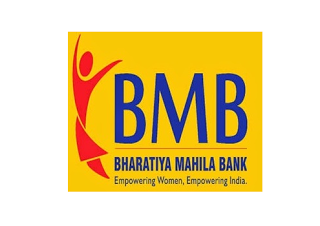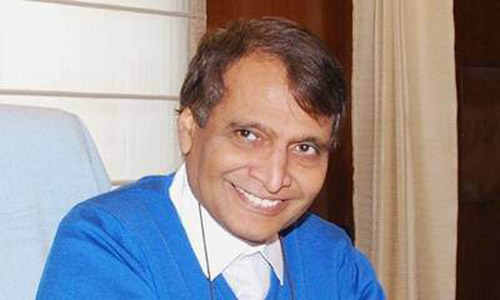“I would like to congratulate Shell, CEEW and TERI for the remarkable work that they have done. The book will start a public debate towards developing long term sustainable policies to strengthen the Indian energy sector. It is a challenging time for policy makers with fluctuating fuel prices globally. The entire value chain of the energy sector is in need of innovation. There is a need for investment in exploration of oil and gas fields for a good energy mix,” said Shri Suresh Prabhu, Hon’ble Minister for Railways, at the launch of the book ‘Energizing India: Towards a Resilient and Equitable Energy System’ in the capital today. The book argues that India’s energy future would depend on four transitions: from traditional to modern energy, from rural to urban energy demand, greater integration into the global energy system, and technological choices that will be affected by the imperative of battling climate change.
The book (authored by Suman Bery, Arunabha Ghosh, Ritu Mathur, Subrata Basu, Karthik Ganesan and Rhodri Owen-Jones) is the result of a three-year long collaboration between three leading institutions: the Council on Energy, Environment and Water (CEEW), The Energy and Resources Institute (TERI) and Shell. The book focuses on India’s energy system as a whole and highlights both the demand and supply sides of the energy system, laying special emphasis on the fuel mix dimension, which most directly affects both energy security and environmental sustainability between now and 2050.
India is in the midst of a huge transformation as the population and economy grows, income rises, manufacturing becomes a bigger part of the economy and the country becomes more urbanised. This growth will drive a sustained expansion of infrastructure for energy, urban development and transportation. If India is to build an energy infrastructure commensurate with ambitions to limit greenhouse gas emissions, it must now also seriously consider infrastructure using natural gas, hydropower and nuclear energy.
Commenting on the initiative, Dr. Yasmine Hilton, Chairman, Shell Companies in India said, “A global energy transition is under way as the world seeks to meet rising demand while lowering carbon emissions. Yet energy systems are large, complex and slow to change. India is in the midst of a major transformation as the population and economy grows, income rises, manufacturing becomes a bigger part of the economy and the country becomes more urbanised. To ensure that consumers across the country have access to clean and affordable energy, it will be important to de-risk and stimulate long-term investments in the energy sector. Our study illustrates that the private sector will play a key role in building capacity, augmenting skills and developing technology.”
Jeremy Bentham, Head of the Scenarios Group at Shell adds, “We have long recognized the critical role energy has in enabling a decent quality of life for people across the world, wherever they live. Given the much-needed spread of prosperity from the minority to the majority world, the big challenge, simply put, for both society and a company like Shell, is how to provide ‘much more energy and much less CO2’. Society needs durable solutions emerging from an informed debate.” Commenting on the book itself, Suman Bery, Chief Economist and lead author, notes, “I have been privileged to work with distinguished local partners to explore the technical and political dilemmas and choices that India faces in a time of global energy system transition. I trust our joint effort will contribute to the already lively national debate on these important and difficult issues.”
The book finds that in the short to medium-term, despite a massive renewable energy revolution in India, fossil-based primary energy could increase from 2 to 4 times its current level by 2050.
This is because conventional options like gas, hydro and nuclear along with coal will continue playing an important role in supporting new renewables. Moreover, with renewables having little scope in being able to supply industrial heat, natural gas holds prominence as a cleaner alternative to the use of coal and diesel. The book further suggests that between now and 2050, transportation will continue to rely heavily on oil-based fuels in spite of gradual penetration of electric fuels and an increasing use of biofuels. Therefore, even as it gives a boost to renewable energy, India cannot veer away from fossil fuels significantly, at least in the short to medium term.
In the short term, to provide energy and not hinder economic growth, coal will be the most critical fuel, particularly if the highest priority is providing electricity to all those that require it. But the use of coal could peak by 2040 if cleaner alternatives progress as expected, so the need for assets to mine, handle and transfer coal may decline after that.
For renewables to make a significant contribution, any policy on power generation should go hand in hand with initiatives to electrify end-use technology (electricity currently makes up only a fifth of useful energy consumed). Even at this point, renewables will only diversify the supply mix. That said, when compared against a ‘business as usual’ scenario, India’sprojected deployment of energy from renewable sources is significant in terms of scale (potentially supplying up to a quarter of energy demand by 2050), performance of other countries, and the timelines within which current policies aspire to achieve large-scale deployment.
Dr Arunabha Ghosh, CEO of CEEW, and one of the lead authors of the book, said, “Energy security and an integrated approach should lie at the heart of India’s National Energy Policy. India should not be afraid of high import dependence, but it should intelligently evaluate the benefits and trade-offs from investing in domestic production versus imports over the next few decades in planning its fuel and technology transitions. Achieving energy security for India would mean paying attention to four imperatives: assured supply, safe passage, secure storage, and a seat at one or more international forums involved in international energy trade and governance. India’s transition to robust and inclusive energy systems holds the key to solving several key development challenges such as eradicating poverty, raising living standards, building world-class infrastructure, and meeting global climate commitments in a carbon-constrained world.”
Dr Ajay Mathur, Director General of TERI, said, “As India’s demand for energy grows, it will find its energy choices being influenced by both macroeconomic conditions and its policies to mitigate climate change. Further, issues of infrastructural, technological and institutional lock-ins of fossil fuels may impact transitions to renewables, apart from the lack of financially viable and scalable energy storage options. Another dimension of India’s energy security challenge is the demand for clean cooking and lighting fuels, particularly in rural India. This study delves into a range of critical cross-cutting issues to provide a coherent and integrated view of the key challenges facing India’s energy sector. The book therefore seeks to inform the national discourse on energy security.”
Dr Ritu Mathur, Director at TERI and a lead author, adds: “As India scales up its renewable energy capacity, it must invest into conventional fuels wisely in order to ensure it doesn’t advance the existing fossil fuel lock-in, and avoids the risk of infructuous investments into infrastructure and equipment.”











